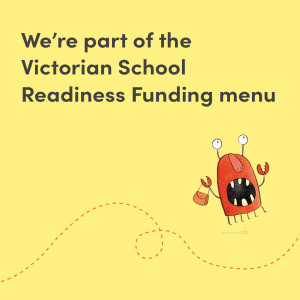Come and Stay for Dinner!
10 Sep 2024

This week StoryBox Hub, are releasing Stay For Dinner, written by Sandhya Parappukkaran, illustrated by Michelle Pereira and read by Masterchef alumni, Alice Zaslavsky. This is a powerful story about diversity, cultural connections and family traditions through food. We recently spoke with author, Sandhya Parappukkaran about what inspired her to write this story, and about her experiences with food and storytelling. We are so excited that Sandhya even shared one of her family’s treasured and traditional recipes for you to try cooking with your families (after reading ‘Stay for Dinner’ of course!)
Sandhya, thank you for speaking with us, can you first tell us what inspired you to write ‘Stay for Dinner’? Is this story based on your own childhood?
I wrote Stay For Dinner because in my family, who hail from Kerala in India, we eat with our hands. Dinner usually means matta rice with a dahl or coconut or yogurt
based curry that is either vegetarian or non-vegetarian. There will be a couple of side dishes to go with that as well. We eat all of that with our right hand. To eat your food like that requires fine motor skills and our children become experts at this from a young age. I’d never seen any character eating with their hands like us in a picture book before and I wanted to write that story. I also noticed that different cultures have different table manner etiquettes, and I wanted to include that in a story for young children. Check out the burp in Stay For Dinner!
Food, family and storytelling are synonymous and celebrated in your story, what meal do you like to cook for your own family and friends?
I’m not the greatest cook but there are a few meals that I am confident in making for my family. One is biryani. My family love it when I make biriyani and it’s the only time my kids take second helpings of food! So, I enjoy cooking biriyani, knowing that it will be eaten up!
You have created magic picture book magic again in ‘Stay for Dinner’ (your previous titles include ‘The Boy who Tried to Shrink his Name and’ Amma’s Sari) How long does the process of writing usually take?
I take up to a year to write a story. Sometimes the whole story comes at once, sometimes I only know half of the story and it takes me a while to figure out the ending. What takes the most time for me is getting the pattern of the story right as this can be different for each story. After the story is acquired by the publisher, there is another round of edits to finesse the work and then it goes to Michelle for illustrations.
Why is it important for you to write stories that champion diversity, inclusion,acceptance and friendship?
I grew up as an avid reader and reading was empowering to me. However, I couldn’t reconcile with my differences, which stood out as a person of colour with a separate cultural heritage than those around me. I didn’t know how to process my experiences living as a migrant in an adopted country and that cost me my self-esteem for many years. I didn’t realise it at the time, but when I look back, I hadn’t read any stories about a kid like me with similar experience that I could specifically relate to. When you read a story that has a main character you can relate to, the self-acceptance that comes from that is quietly and powerfully restorative. This healing is something I needed so much when growing up but couldn’t find. Stories that champion diversity, inclusion, acceptance and friendship are much needed to validate feelings, process emotions and build empathy. If you don’t relate to the characters, you have the opportunity to experience perspectives you have never encountered before, feel compassion and be more understanding.
Finally, can you tell us about your favourite comfort meal you enjoyed growing up with your family?
Oh yes. Comfort meal for me means matta rice with a yogurt curry which we call ‘moru kacheethu’. I would have that with an upperi, which is sort of like a stir-fry. My favourite upperi would be either made from bitter-melon (kaipakka) or plaintain (kaya). I’d also have hot mango pickle (manga acharam) on the side, and a pappadum fried in oil to top it all off!
We are delighted that Sandhya was willing and gracious to share one of her family’s treasured recipes for us to try:
A recipe to share: This is an afternoon tea snack we like to make.
Onion Pakora
Ingredients:
1. Two medium onions – thinly sliced – place aside in a bowl.
2. Salt – ¾ teaspoon (or according to your taste)
3. Besan flour (chickpea flour) – 1 cup
4. Rice flour – ¼ cup
5. Chilli powder – ½ teaspoon (decrease or increase according to your taste)
6. Water – ¼ to ½ cup
7. Oil – for frying
Thinly slice the onions and place in a large bowl. Add the salt and mix the onions with your fingers making sure the strands are separated. Keep aside for 10 minutes after which the onions should have released water. In another bowl, add ingredients 3 to 5 and mix well. Add this dry mix to the onions. The water in the onions should be enough to create a thick batter. If not sprinkle ¼ cup water and mix. Add more water if needed, although the batter should not be loose and runny. Once you have a thick batter, you are ready to fry. In a deep bottomed pan, heat oil for frying. Add spoonfuls of onion batter to the hot oil and fry until golden brown and cooked through. Place the fried pakoras in a colander or on kitchen paper towel to drain off excess oil before serving.





